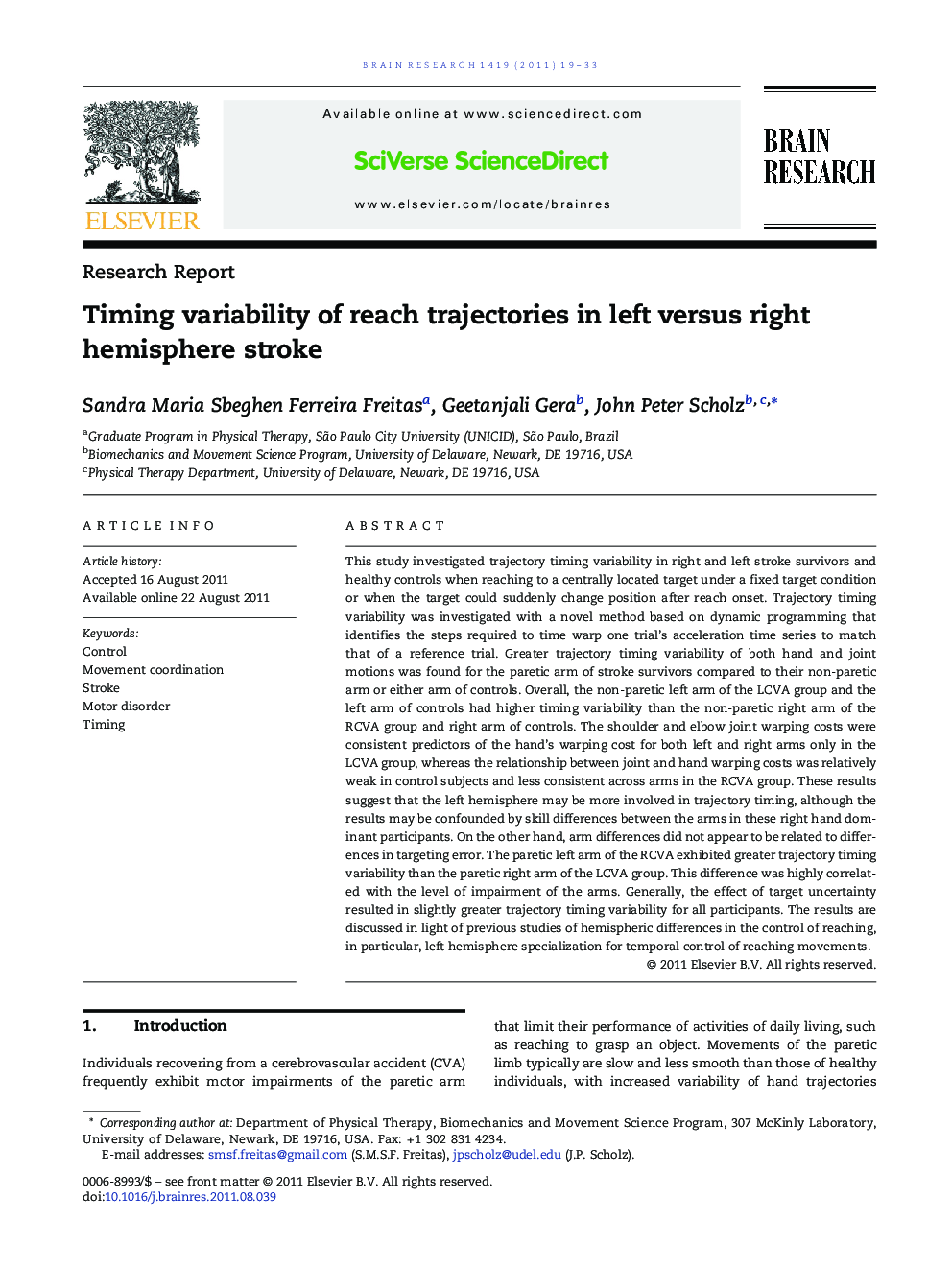| کد مقاله | کد نشریه | سال انتشار | مقاله انگلیسی | نسخه تمام متن |
|---|---|---|---|---|
| 4325612 | 1614020 | 2011 | 15 صفحه PDF | دانلود رایگان |

This study investigated trajectory timing variability in right and left stroke survivors and healthy controls when reaching to a centrally located target under a fixed target condition or when the target could suddenly change position after reach onset. Trajectory timing variability was investigated with a novel method based on dynamic programming that identifies the steps required to time warp one trial's acceleration time series to match that of a reference trial. Greater trajectory timing variability of both hand and joint motions was found for the paretic arm of stroke survivors compared to their non-paretic arm or either arm of controls. Overall, the non-paretic left arm of the LCVA group and the left arm of controls had higher timing variability than the non-paretic right arm of the RCVA group and right arm of controls. The shoulder and elbow joint warping costs were consistent predictors of the hand's warping cost for both left and right arms only in the LCVA group, whereas the relationship between joint and hand warping costs was relatively weak in control subjects and less consistent across arms in the RCVA group. These results suggest that the left hemisphere may be more involved in trajectory timing, although the results may be confounded by skill differences between the arms in these right hand dominant participants. On the other hand, arm differences did not appear to be related to differences in targeting error. The paretic left arm of the RCVA exhibited greater trajectory timing variability than the paretic right arm of the LCVA group. This difference was highly correlated with the level of impairment of the arms. Generally, the effect of target uncertainty resulted in slightly greater trajectory timing variability for all participants. The results are discussed in light of previous studies of hemispheric differences in the control of reaching, in particular, left hemisphere specialization for temporal control of reaching movements.
► Trajectory timing variability was studied in right and left brain strokes and healthy controls.
► Stroke survivors showed higher timing variability of both paretic and non-paretic arms compared to controls.
► The non-paretic arm of left hemisphere strokes and the left arm of controls had higher timing variability than the other arm.
► Target uncertainty increased timing variability except for the dominant arm of controls.
► Results were generally consistent with the left hemisphere's presumed greater role in trajectory formation.
Journal: Brain Research - Volume 1419, 24 October 2011, Pages 19–33